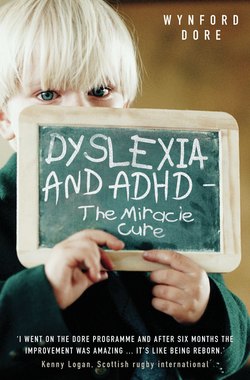Читать книгу Dyslexia and ADHD - The Miracle Cure - Wynford Dore - Страница 20
На сайте Литреса книга снята с продажи.
WHAT IS ASPERGER’S SYNDROME?
ОглавлениеThe term ‘Asperger’s Syndrome’ was coined by Lorna Wing in a 1981 medical paper. She named it after Hans Asperger, an Austrian psychiatrist and paediatrician, who published a paper in 1944. His work was not internationally recognised until 1990 – yet another example of how important breakthroughs can often be ignored.
Asperger’s Syndrome is a milder variant of autism. Both Asperger’s Syndrome and autism are, in fact, subgroups of a larger diagnostic category. This larger category is called either Autistic Spectrum Disorders (ASD) mostly in European countries, or Pervasive Developmental Disorders (PDD) in the United States (DSM IV). In Asperger’s Syndrome, affected individuals are characterised by social isolation and eccentric behaviour in childhood. Individuals with Asperger’s are considered to have a higher intellectual capacity compared to those with autism while also suffering from a difficulty with social interaction. There are impairments in two-sided social interaction and non-verbal communication. Though grammatical, their speech is peculiar due to abnormalities of inflection and a repetitive pattern. Clumsiness is prominent both in their articulation and in gross motor behaviour (the way we move the limbs of our bodies). They usually have one or more areas of obsessive interest and often less than usual interest in things more appropriate and common to their age group.
According to the DSM IV guidelines, which provide the diagnostic criteria for almost, if not all, psychological conditions, Asperger’s Syndrome is diagnosed by the presence of some, or all of the following behavioural characteristics:
Lack of ability to use non-verbal communication behaviour such as making eye contact, using facial expressions and body postures in social interaction
Failure to develop peer relationships appropriately
A lack of spontaneous ability to share enjoyment, interests or achievements with other people (e.g. by a lack of showing or pointing out objects that may be of interest)
Also, there are typical repetitive patterns of behaviour that include at least one of the following:
A preoccupation with one or more particular subjects to an abnormal level
Inflexible adherence to unusual routines or rituals
Repetitive mannerisms (e.g. hand- or finger-flapping, twisting or complex whole-body movements)
Persistent preoccupation with parts of objects
The disturbance causes significant impairment in social, occupational or other important areas of functioning but no significant general delay in the use of language (e.g. single words used by age two years, communicative phrases used by age three years, etc.)
There should be no significant delay in cognitive development or in the development of age-appropriate self-help skills, adaptive behaviour (other than in social interaction) and curiosity about the environment in childhood.
As you can see, just working out which labels to use is not easy. However, it is important to remember that these are only labels and the combination of symptoms found in real life number far more than the number of labels. The fact is that labelling of dyslexia, ADHD, dyspraxia and Asperger’s Syndrome has been far too rigid. The symptoms of these learning difficulties often occur together, making them extremely difficult to categorise. For instance:
75 per cent of dyslexics also have symptoms of ADHD, dyspraxia or both
84 per cent of ADHD sufferers also have symptoms of dyslexia, dyspraxia or both
64 per cent of dyspraxics have symptoms of ADHD, dyslexia or both
The following table looks at how conventional assessment puts symptoms into categories. However, look how much crossover there is between them:
KEY 1 = Mild/sometimes present 2 = Common symptom 3 = Usually a severe symptom
| LEARNING BEHAVIOUR SYMPTOM SUMMARY | ||||
| SYMPTOMS | DYSLEXIA | DYSPRAXIA | ADHD | ASPERGER’S |
| Poor reading (difficult, tiring, jump words) | 3 | 2 | 2 | 1 |
| Poor handwriting (scrawling, or neat but very slow) | 2 | 3 | 2 | 2 |
| Poor concentration | 1 | 2 | 3 | 2 |
| Low self-esteem | 2 | 2 | 2 | 2 |
| Hyperactivity | 1 | 1 | 3 | 1 |
| Clumsiness (catching balls, riding a bike etc) | 1 | 3 | 2 | 3 |
| Speech problems | 1 | 1 | ||
| Poor (short) memory (lists, names, phone numbers etc) | 1 | 1 | 1 | 2 |
| Poor social skills | 1 | 1 | 2 | 2 |
| Repetitive/ compulsive | 1 | 2 | ||
| Poor time perception | 1 | 2 | 1 | 2 |
| Poor emotional control (frustration, anger, depression) | 2 | 2 | 2 | 3 |
| Poor sleep patterns (especially when young) | 1 | 1 | 1 | 1 |
